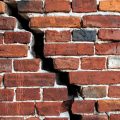
Carpets make our homes cosy, keep our feet warm and change the whole look of our room. But installing a carpet is a messy process that requires handy work, elbow grease and heavy lifting. So, if you are contemplating changing the carpets at home, the least you will need is a bit of assistance.
From getting the old carpet out to preparing the surface and laying the brand new carpet – here’s what you need to know.
Preparations before installing the new carpet
The very first step that you will have to do is measure the space. Having a carpet that is too small can look bad when filler pieces are added, and carpets too big have to be returned for shortening.
To skip all this hassle, make sure you measure the space correctly and buy the right size carpet. When you’ve acquired the carpet, make sure you take out all of the furniture in that room. We recommend you call a friend to lend you a hand.
How to remove the old carpet
Carpet removing is an art on its own. It’s not a job too tricky, but it takes time and a lot of power to be done correctly. You can remove the carpet by yourself, although it won’t hurt asking for help.
Here’s a Fantastic Handyman’s carpet removal process. Keep in mind that this is done by professionals and you carry all the responsibility if you decide to do it on your own. There is still a chance of hurting yourself in the process, so consider this carefully.
- Gloves
- Mask
- Hammer
- Pry bar
- Razor Knife
- Upholstery/carpet staple remover
- Inspect the corners of the carpet
In order to remove the old carpet, you’ll have to start from the corner. Decide which corner would be most suitable for you to pull the carpet out. Keep in mind that cove bases can hinder the carpet removal process, so you can try and get rid of them first. Under every carpet, some strips keep the carpet glued to the ground. Pulling hard enough will do the job. Just be careful not to hurt yourself. - Cut the carpet while you remove it
Rolling a huge carpet and taking it out of the house can be a tough job. If you don’t plan on reusing the carpet, you can cut it into pieces and take it out. This should be done while removing it from the ground in the first place. When you have enough carpet, fold it over the glued part and cut it out. - Remove old strips and carpet padding
When you install a brand new carpet, you will have to remove the old padding, as well. This is an opportunity to inspect your floor and see if you should do any repairs before putting on the new floor coverings. Carpet padding is most often kept with staples and is in square pieces. Use gloves when removing it, as staples tend to stick in hands. You shouldn’t have any problems removing the old strips with the help of the pry bar and the hammer. - Clean and inspect again
Someone spilt a drink, or you have a naughty pet – make sure you inspect the floor and see if there is any need for repairs. Once you put the new carpet in place, it may be a decade before you have that opportunity for free.
How to install the new carpet
Getting rid of the old carpet was the easy part. Following the steps below will help you figure out how to lay the new carpet, but if you worry you may fail, you have other options, too. Like getting some real-life carpet laying tips from someone who is knowledgeable in this area or hiring a professional to do it for you quicker.
You’ll need these carpet installation tools:
- Tackless strips
- Strip cutter
- Tape
- Gloves
- Hammer
- Staple gun
- Razor Knife
- Wall Trimmer
- Measuring Tape
Here’s how to lay your new carpet in place:
- Vacuum the floor
The new carpet should be put on a smooth, clean surface. Make sure you remove any chips of paint, dirt that may bump the carpet underneath, etc. The floor should be smooth. - Remove the doors
Working your way around doors can be really annoying. If possible, take them out. This would also allow you access to removing the door jambs if needed. - Lay out the tackless strips
With the use of a strip cutter, cut the tackless strips to the right size and put them in their place. Depending on the floor, you may have to use different kind of strips. For concrete floors, you will have to use epoxy to keep the strips in place. For wood flooring, nail the strips around 1.5 cm from the wall. Don’t install the strips in thresholds and doorways. - Lay down and staple the carpet padding
Put the carpet padding in place, ensure that it’s all in place and sits tight and staple the carpet pieces to the strips. Feel the tackless strip with your hands, and with the help of a razor knife, cut out the excess part of the tackless strips. - Dry-fit the carpet
Definitely one of the most important steps when placing your carpet. Lay down the carpet in the room and see if it fits perfectly. This step will show if the carpet is the correct size and if there should be any trimming. - Fit the carpet
If everything is fine and the carpet is the correct size you can place the carpet for good. Stretch the carpet, so it fits perfectly everywhere.
Takeaways
- Don’t forget to measure the space where your new carpet will go, so you can be sure that it will fit perfectly.
- Removing an old carpet is not a tough job, but it’s still a risky one. Definitely wear protective gear if you decide to do it yourself.
- Always install a new carpet on a smooth, clean and stable floor. If any repairs are needed, now is the perfect time to do them before you lay your new carpet for good.



